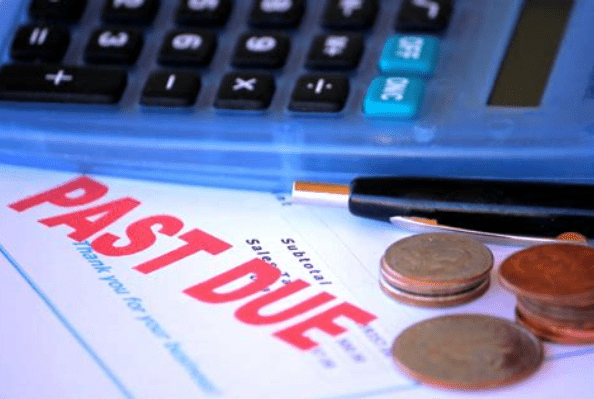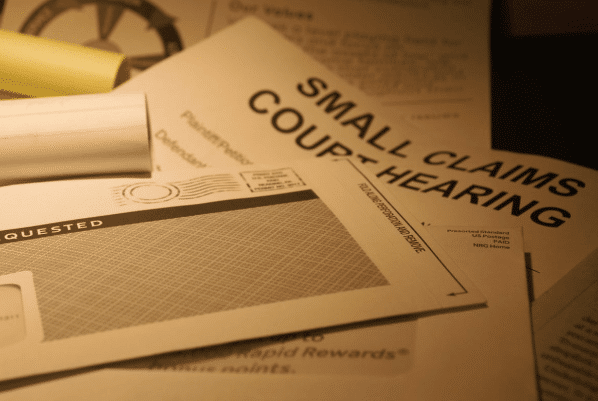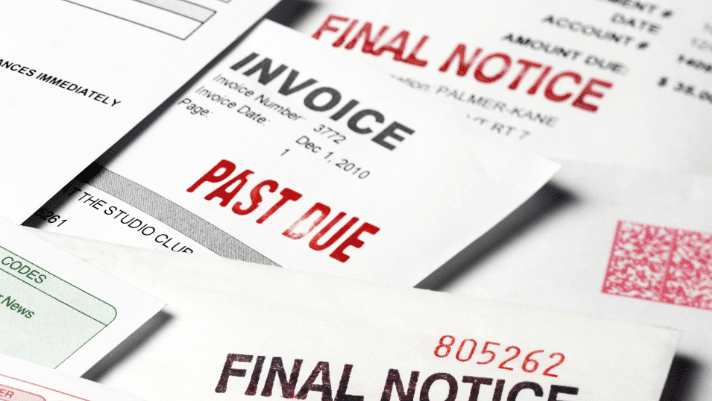In Oklahoma, you have a 20-day window to respond to a debt lawsuit. Your response should take the form of a written Answer, wherein you address every claim made against you and assert any affirmative defenses you may have. ZumaZip can guide you through each stage of this process and more, providing valuable assistance in handling a lawsuit.
Facing a debt collection lawsuit in Oklahoma can feel overwhelming, especially when you receive official Court Documents notifying you of the legal action. However, with ZumaZip, you can put a halt to those intimidating Collection Calls and navigate the legal process with greater ease.
Getting sued is stressful, and when it’s for debt collection, the stress can feel insurmountable, especially if you’re already struggling financially. Not having enough money coming in is often the reason behind falling behind on payments in the first place. This financial strain can make hiring an attorney seem impossible.
Ignoring a lawsuit might seem like the easiest option, but it’s not the wisest. Ignoring it simply ensures that the person suing you will win by default. To protect yourself, you need to respond. If you’ve been sued for debt in Oklahoma, the first step is to file a written Answer with the court. We’ll guide you through the entire process, including state deadlines, drafting an Answer, and providing available forms to assist you.
Table of Contents
- Deadlines
- Answer forms
- Oklahoma Filing Fees
- Steps to Respond to Petition
- What is ZumaZip?
- Statute of Limitations in Oklahoma
- Settle the Debt Before Court
- Oklahoma Legal Aid Organizations
- Key Takeaways
- Guides for Other States
You have 20 days to respond to a debt collection lawsuit in Oklahoma
When you’re served with a Summons and Petition for a debt lawsuit, take note of the filing date as it marks the beginning of your response window. From that date, you have 20 days, weekends included, to craft and file your response. For instance, if you were served on March 1, 2022, your deadline would be March 21, 2022.
Missing this deadline can have serious consequences. The plaintiff may request a default judgment from the court, effectively winning the case due to your non-response. This not only results in a loss for you but also opens the door for potential garnishment of your wages or bank account by the plaintiff.
Garnishment can significantly impact your financial stability, making it essential to act promptly and file your response within the given timeframe. Doing so provides you with the opportunity to contest the debt amount or negotiate a feasible payment plan, thereby safeguarding your interests in the lawsuit.
Use an Answer form to respond a debt collection case in Oklahoma
While many states offer online forms that you can fill in directly from the court’s website, Oklahoma does not. Don’t let that stop you, however, from having the confidence to file your own response.
Drafting and filing a written Answer to a debt collection lawsuit isn’t as complicated as you might think. ZumaZip will walk you through each step so you can have the strongest response possible.
You can draft a free Answer on ZumaZip’s site in less than 15 minutes. All you have to do is answer a few questions online, and ZumaZip will translate your responses into the necessary format and legalese for the court documents.
Additionally, to give you peace of mind, we’ll have an attorney review the completed documents to make sure everything is correct. Then ZumaZip will file all the paperwork on your behalf. You don’t even need to leave your house!
Watch out for Answer Filing fees
Luckily, there are no fees to file an Answer in Oklahoma! That being said, you should double check the court’s fee schedule if you plan to file a counterclaim or motion into your case. There may be fees for these: Oklahoma Court Fees
Follow these steps on how to answer a Petition in an Oklahoma debt collection case
If you decide to file your own response to a debt collection case in Oklahoma there are a few important things to keep in mind before you get started. First and foremost, make certain that you file your response before the end of the twenty day deadline. Second, you can respond by filing an Answer document or by filing a Motion. This article will focus on the Answer document only. Motions are by their very nature more complex, and best left to legal counsel. An Answer document, by contrast, is pretty straightforward and made up of the steps below:
- Answer each issue of the complaint
- Assert affirmative defenses
- File one copy of the Answer document with the court and serve the plaintiff with another copy.
Now, let’s break down each of these steps a little further.
1. Answer each issue listed in the Petition.
The first step to drafting your Answer is to respond to the allegations in the Complaint. You should respond to each and every allegation separately. You’ll probably notice that the allegations are listed out in numbered paragraphs. You should structure your answers the same way, and list your response to each numbered paragraph in a corresponding paragraph starting with the same number. It’s simpler than it sounds – for the allegation in paragraph #1, you should write your response in your paragraph #1.
For every allegation you can use one of the below three answer choices. Think of this as answering “just the facts.” It’s ok to admit to things that are true, such as factual information that is correct, like your name or account number. Answering these in the affirmative (by stating “admit”) will not hurt your case. You don’t have to deny every allegation to win the lawsuit. You can if you like, but realistically you only need to win on one issue.
- Admit
- Deny
- Unable to Admit or Deny for lack of information
You should certainly put “deny” for any allegations that are not true. For instance, if the plaintiff said you refused to pay and that is not the case, you can simply list “deny.” You also have the opportunity to admit or deny “with explanation” if you think there are relevant facts to disclose to the Court. The final response is appropriate in cases where you don’t have the ability to verify if something is true or false, for example details about the plaintiff company.
ZumaZip makes it simple to respond the right way.
2. Assert affirmative defenses.
This next section might even be a little fun. This is where you get to fight back, using affirmative defenses. Affirmative defenses are any reason that you can assert which shows that the plaintiff does not have a case. You can find a complete list of all of the available affirmative defenses available in the Oklahoma Statutes, Title 12 Civil Procedure §12-2008(C.) You are entitled to use any and all affirmative defenses that apply to your circumstances.
We will go over some of the more common affirmative defenses below. Please keep in mind that this is not a complete list. Please also note that, however true it may be, the inability to pay is not an affirmative defense.
- Payment: This one is pretty straightforward. If you already paid the debt in question, they can’t ask you to pay it again. This comes up fairly frequently because usually debt collection lawsuits aren’t being brought by your original creditor. Rather, the plaintiff is a third-party debt collection agency who purchased the debt from your original creditor, usually in a large bundle of debts. This debt collection company makes money by trying to collect on all the debts, usually without doing a lot of research into each individual debt. Remember our discussion above about default judgments? If the plaintiff can intimidate someone into not responding to a lawsuit and get a default judgment, they don’t need to prove anything further. Whereas if they have to look closer at each individual debt, it’s possible that you already paid it or came to another agreement with your original creditor.
- Accord and satisfaction: This is the legal terminology for any agreement that is made between two parties where less than the full amount owed will be accepted in full satisfaction of the total debt. So if you made an agreement like this with your original creditor that the debt buyer didn’t find, you can again prove that you no longer owe the debt. Make certain to attach any proof you have of such an agreement, such as emails or canceled checks, to your response.
- The debt was already discharged in a bankruptcy. If you previously filed a bankruptcy case which included this debt, and that bankruptcy was discharged, then no one can try to collect the debt through the legal system.
- Statute of limitations has expired. A statute of limitations is a law that sets a deadline for legal action in various matters. We will discuss the Oklahoma statute of limitations on debt collection in more detail later in this article.
With ZumaZip you can make the right affirmative defenses the right way.
After you’ve exhausted your affirmative defenses you can also assert any counterclaims that you might have against the plaintiff. Counterclaims would most likely arise if the plaintiff violated any Oklahoma debt collection laws. Oklahoma follows the federal Fair Debt Collection Practices Act. Oklahoma further enacted it’s own version of an Oklahoma fair debt collection practices act in the Oklahoma Statutes as Section 7-101of Title 14A,which is titled the Uniform Consumer Credit Code -Fair Debt Collection Practices. It’s important to keep in mind, however, that counterclaims can get complicated very quickly. If you believe you have a reasonable counterclaim against the plaintiff it would be best to get legal assistance to pursue it.
3. File the Answer with the court and serve the plaintiff.
Your final step is to file your Answer with the Court. Confirm that you are within the 20 day deadline and then make sure to do the following:
- Print at least two copies of your Answer
- Mail one copy to the court
- Mail the other copy to the plaintiff’s attorney.
It’s never a bad idea to make an extra copy of your Answer for your records which could be helpful at your hearing.
Use this sample Answer as your guide
Here’s a handy, dandy sample Answer from ZumaZip to guide you in drafting your response to the Petition. Remember, you can access this form on ZumaZip’s website for free and fill it out in a matter of minutes:
Sample Answer to Debt Collections Summons
Why ZumaZip?
ZumaZip makes it easy to fight debt collectors.
You can use ZumaZip to respond to a debt lawsuit, to send letters to collectors, and even to settle a debt.
ZumaZip’s Answer service is a step-by-step web-app that asks you all the necessary questions to complete your Answer. Upon completion, we’ll have an attorney review your document and we’ll file it for you.
Check the statute of limitations on debt in Oklahoma
The statute of limitations on debt is 5 years in Oklahoma (Oklahoma Statute of Limitations) for written contracts, promissory notes (mortgages), and credit cards. This statute includes most typical debt collection areas like medical debt, credit cards and auto loans. Oral contracts and open contracts have a shorter statute of limitations of just 3 years.
In other words, if you haven’t made a payment on your account for 5 or more years (3 for oral/open contracts), you cannot be sued for the debt in Oklahoma.
| Debt Type | Deadline |
|---|---|
| Credit Card | 5 years |
| Medical | 5 years |
| Student Loan | 5 years |
| Auto Loan | 5 years |
| Mortgage | 5 years |
| Personal Loan | 5 years |
| Judgment | 5 years |
| Okla. Stat. tit. 12 § 95 and § 735 |
Settle your debt in Oklahoma before going to court
Maybe you know that you owe the debt. If this is the case, you might be wondering if debt settlement is a good option for you.
If you’ve been sued for debt, you can reach out to your creditors or debt collectors at any stage of the lawsuit to discuss debt settlement. Debt settlement is the process by which a consumer, like you, settles an outstanding debt for an amount that is less than the full amount owed.
ZumaZip Settles, powered by ZumaZip, makes the debt settlement process simple.
As a tech-based approach to debt settlement, ZumaZip Settle’s software can help you send and receive settlement offers until an agreement is reached. Then, it helps manage your documentation of the settlement and transfers your payment to the creditor or debt collector, keeping your financial information private and secure.
What if I’m sued in Oklahoma small claims court?
Small claims cases involve claims less than $10,000 in Oklahoma. Here’s everything you need to know about responding in Oklahoma small claims court.
The process for responding in a small claims court is very similar to a regular civil court of law. You should still file your written Answer within the deadline and and attend the scheduled court hearing to avoid a default judgment. During the hearing, you’ll have the opportunity to give your side of the story, and a judge will make a decision in the case.
Should I hire a lawyer if I’m being sued for debt in Oklahoma?
Hiring an attorney can be time-consuming, stressful, and expensive. In fact, the cost to hire a lawyer might even be more than the debt you owe. ZumaZip makes it easy to represent yourself, saving you time and money.
With ZumaZip’s premium package, an attorney will review your court documents and Answer before ZumaZip files it for you. That way, you can feel confident that you have the strongest case possible without going through the trouble of hunting down and hiring a lawyer.
You can also reach out to the various legal aid organizations that the state of Oklahoma has set up to help pro se litigants in navigating the legal system.
Oklahoma Legal Aid Organizations
You can find legal aid organizations in every state that offer free services to residents who could not otherwise afford them. In Oklahoma you can look into the following:
- Legal Aid Services of Oklahoma
- Oklahoma Free Legal Answer
- Oklahoma Lawyers for America’s Hero’s Program
- Oklahoma Indian Legal Services
Oklahoma Court Locations
Key Takeaways
In short, here’s a quick review on how to answer a summons for debt collection in Oklahoma.
- Remember your response deadline is 20 days
- Use ZumaZip or draft your own Answer.
Follow these three steps:
- Answer each issue in the Petition.
- Assert your affirmative defenses
- File and serve the Answer
What is ZumaZip?
ZumaZip is a convenient solution designed to streamline your response to a debt collection lawsuit. Here’s a breakdown of what you can expect when you use ZumaZip:
Firstly, you’ll access our user-friendly web application, which guides you through the process step by step. You’ll be prompted to answer a series of questions related to your specific situation. Once you’ve completed the questionnaire, you have the option to either print out the finalized forms and mail them to the appropriate courts yourself, or you can opt to utilize ZumaZip’s services to file them on your behalf. Additionally, if you choose this option, an attorney will review your document for added peace of mind.
If you’re seeking guidance on how to effectively respond to a debt collection lawsuit, ZumaZip can provide the assistance you need. Feel free to explore our FAQs for more information on what ZumaZip has to offer.
What if I haven’t been sued yet?
If you’ve only received a collections notice, but not a lawsuit, the best way to respond is with a Debt Validation Letter. When a debt collector contacts you in any way, whether it’s by phone or mail, you can respond by formally requesting a debt validation with a Debt Validation Letter . This letter notifies the collector that you dispute the debt and forces them to provide proof you owe the debt. They can’t call you or continue collecting until they provide validation of the debt. This flowchart shows how you can use a Debt Validation Letter to win.
Get started with a Debt Validation Letter here.
How to Answer a Summons for debt collection in all 50 states
Here’s a list of guides on how to respond to a debt collection lawsuit in each state:
- Alabama
- Alaska
- Arizona
- Arkansas
- California
- Colorado
- Connecticut
- Delaware
- Florida
- Georgia
- Hawaii
- Idaho
- Illinois
- Indiana
- Iowa
- Kansas
- Kentucky
- Louisiana
- Maine
- Maryland
- Massachusetts
- Michigan
- Minnesota
- Mississippi
- Missouri
- Montana
- Nebraska
- Nevada
- New Hampshire
- New Jersey
- New Mexico
- New York
- North Carolina
- North Dakota
- Ohio
- Oklahoma
- Oregon
- Pennsylvania
- Rhode Island
- South Carolina
- South Dakota
- Tennessee
- Texas
- Utah
- Vermont; Vermont (Small Claims court)
- Virginia
- Washington
- West Virginia
- Wisconsin
- Wyoming
Guides on how to beat every debt collector
Hey there! Facing off against a debt collector can feel like a daunting challenge, but fear not! We’re here to help you navigate through it all with our handy guides designed to assist you in beating every debt collector you encounter. Whether you’re facing a new lawsuit or dealing with a persistent collector, we’ve got your back. Stay positive, stay informed, and let’s tackle this together!
- Absolute Resolutions Investments LLC
- Accredited Collection Services
- Alliance One
- Amcol Clmbia
- American Recovery Service
- Asset Acceptance LLC
- Asset Recovery Solutions
- Associated Credit Services
- Autovest LLC
- Cach LLC
- Cavalry SPV I LLC
- Cerastes LLC
- Colinfobur
- Covington Credit
- Crown Asset Management
- CTC Debt Collector
- Cypress Financial Recoveries
- Delanor Kemper & Associates
- Eagle Loan of Ohio
- Educap
- Estate Information Services
- FIA Card Services
- Forster & Garbus
- Freshview Solutions
- Fulton Friedman & Gullace LLP
- Harvest Credit Management
- Howard Lee Schiff
- Hudson & Keyse LLC
- Integras Capital Recovery LLC
- Javitch Block
- Jefferson Capital Systems LLC
- LVNV Funding
- Mannbracken
- Mariner Finance
- Medicredit
- Michael J Adams PC
- Michael J Scott
- Midland Funding LLC
- Mullooly, Jeffrey, Rooney & Flynn
- Mountain Land Collections
- MRS Associates
- National Collegiate Trust
- Nationstar Foreclosure
- Northstar Capital Acquisition
- NCEP LLC
- NRC Collection Agency
- OneMain Financial
- Palisades Collection LLC
- Pallida LLC
- Paragon Revenue Group
- Pinnacle Collections Agency
- PMAB LLC
- Portfolio Recovery Associates
- Provest Law
- PYOD LLC
- Reunion Student Loan Finance Corporation
- Revenue Group
- Regents and Associates
- RSIEH
- Salander Enterprises LLC
- Second Round Sub LLC
- Security Credit Services
- Sherman Financial Group
- Suttell and Hammer
- T-Mobile
- Transworld Systems
- Tulsa Teachers Credit Union
- UCB Collection
- Velo Law Office
- Velocity Investments
- Waypoint Resource Group
- Weinberg and Associates
- Wolpoff & Abramson
Settle your medical debt
Having a health challenge is stressful, but dealing medical debt on top of it is overwhelming. Here are some resources on how to manage medical debt.
- Am I Responsible for My Spouse’s Medical Debt?
- Do I Need a Lawyer for Medical Bills?
- Do I Need a Lawyer to Fight Medical Bill Debt?
- Does Bankruptcy Clear Medical Debt?
- How Much Do Collection Agencies Pay for Medical Debt?
- How to Find Medical Debt Forgiveness Programs
- Is There a Statute of Limitations on Medical Bills?
- Medical Debt Statute of Limitations by State
- Summoned to Court for Medical Bills — What Do I Do?
- Summoned to Court for Medical Bills? What to Do Next
Stop calls from Debt Collectors
Do you keep getting calls from an unknown number, only to realize that it’s a debt collector on the other line? If you’ve been called by any of the following numbers, chances are you have collectors coming after you, and we’ll tell you how to stop them.



































